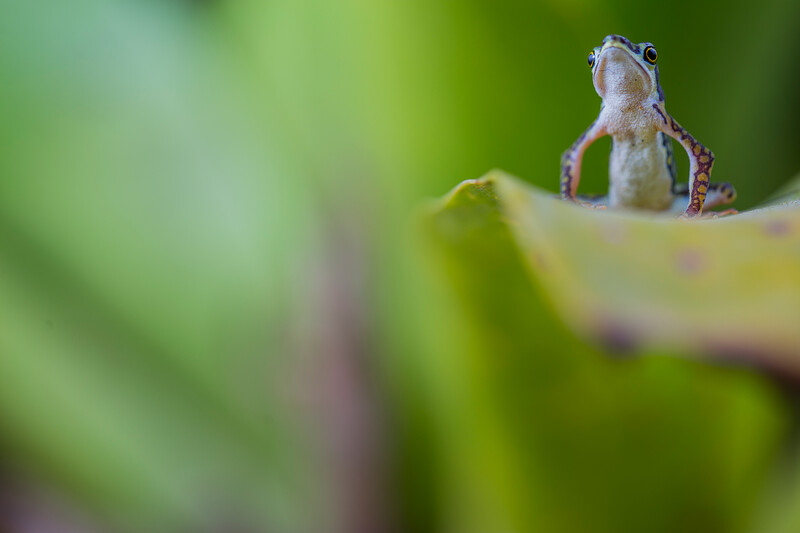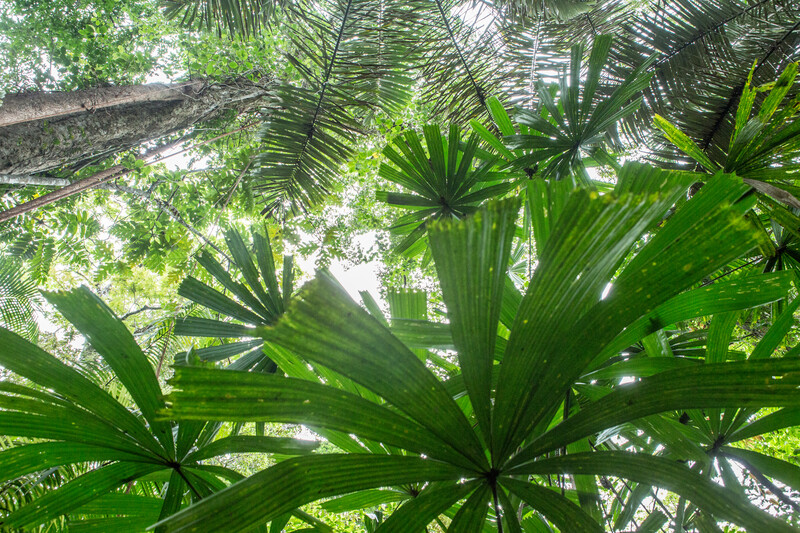Issued on: 14/12/2022 -
Montreal (AFP) – Headlining the COP15 biodiversity talks is a drive to secure 30 percent of Earth's land and oceans as protected zones by 2030 -- the most disputed item on the agenda.
Some campaigners say the so-called "30x30" target is nature's equivalent of the landmark 1.5C global warming target set at climate talks under the Paris Agreement.
But delegates negotiating a broad accord for protecting nature are divided over how to pay for "30x30" and how the measure would be applied.
Here are some facts about the initiative, one of numerous targets under discussion at the talks taking place in Montreal until December 19.
Too much?
Fearful that COP15 will end with a less ambitious agreement, scientists and environmentalists insist 30 percent must be a minimum target for protecting nature, not a ceiling.
Currently, 17 percent of land and eight percent of the seas have protected status.
South Africa, Russia, and Saudi Arabia have argued for a target of 20 percent. Other countries, such as China, Japan and South Korea support 30 percent for land but want a less arduous target of 20 percent for the seas.
The target would be applied worldwide, so countries with big populations or small shorelines would not be obliged to contribute a disproportionate share.
Some countries would shoulder higher percentages, particularly ones that are home to areas of rich biodiversity, or places of strategic importance for arresting climate change -- such as the Amazon and the Congo Basin.
Some say the 30 percent target is not ambitious enough.
"Thirty percent would be a laudatory goal if the year were 1952. But it's 2022 and we don't have the luxury of waiting," said Eric Dinerstein, a biologist who authored "Global Safety Net," a study on areas in need of protection.
"The simplest way to say it, as we biologists would like to put it, is that 50 percent is our 1.5 degrees."
Oscar Soria of the civil campaign group Avaaz called too for a 50-percent target, in line with other NGOs such as Wild Foundation and One Earth.
He argued that if governments recognized indigenous peoples' and other communities' rights over their territory, the 30 percent protection target would have already been achieved.
Accounting for six percent of the world's population and occupying 25 percent of its land, indigenous people are key players in the Montreal talks.
"We are here to send the message that we cannot achieve ambitious conservation aims unless our rights are fully taken into account," said Jennifer Corpuz, a lawyer and member of the International Indigenous Forum on Biodiversity.
Subject to conditions
Many NGOs say they will accept a 30 percent target if certain criteria are met, such as only including ecologically significant land in the protected areas and ensuring effective protection measures.
Some are demanding that a fixed percentage of the land be classed as strongly or totally protected -- with barely any human activity.
Most of these elements have yet to be approved in the draft agreements under discussion.
Campaigners are therefore pressing for action from one of the negotiating blocs at COP15: the High Ambition Coalition for Nature and People. The bloc is jointly led by Costa Rica, France and Britain and backed by 130 countries that support the 30 percent target.
Some are limiting the scope of these demands, however.
"If the criteria are too restrictive, countries will go and protect areas that are not of great interest for biodiversity," said one Western negotiator who asked not to be named.
"But the richest areas are also the ones with the best resources: they have to be managed sustainably but not prohibited," the negotiator added.
"There is a lot of talk about 30 percent, but what is key is also what is done to nature in the remaining 70 percent."
Other key aims at stake in the talks are defending biodiversity in land management, reducing the use of pesticides, and restoring damaged land.
© 2022 AFP
Key Biodiversity Areas are critical to the future of life on Earth
By Penny Langhammer on December 13, 2022

In the mid-2000s, I became extremely concerned about the number of amphibian species that were experiencing drastic population declines—and even extinctions—because of the fungal disease chytridiomycosis. Species were even disappearing from well-protected areas. At the time, I had been focused on identifying and protecting Key Biodiversity Areas (KBAs), which are the most important sites on the planet for species and ecosystems. I had co-authored many scientific papers and even a book about KBAs. But given these drastic amphibian declines, I started to worry that our efforts to identify and protect KBAs were not working, at least for amphibians, and I wanted to help uncover a solution.
So I pursued a PhD on the impacts of chytridiomycosis on the frogs of Puerto Rico, where three species extinctions had been recorded since the mid-70s. After five years of study, I came back around full circle. I realized that the most effective way to address this disease crisis was to prevent the pathogen’s spread to new places and to give the amphibians a better chance at surviving disease outbreaks and potentially evolving resistance or tolerance to the pathogen by protecting their habitat.

I have been working to help identify and protect KBAs globally for 20 years, nearly my entire conservation career. We have limited time and resources to address the biodiversity crisis, and as a scientist, I have been drawn to this approach, which aims to identify the most important sites on the planet in a rigorous, data-driven and transparent way, according to a global standard. And as a conservationist, I appreciate that KBAs provide a practical, bottom-up approach for countries to identify sites that can guide multiple sectors of society in their efforts to minimize the further loss of the Earth’s biodiversity.
Identifying and protecting KBAs, especially sites that are home to the last remaining population of a Critically Endangered or Endangered species (called Alliance for Zero Extinction sites), is of critical importance even for species impacted by threats that are not related to habitat destruction, like disease. While I have many other responsibilities as Re:wild’s executive vice president, I remain firmly committed to advancing our work as part of the KBA Partnership. This includes our current participation in the UN’s 15th biodiversity summit, known as the Conference of the Parties to the Convention on Biological Diversity (COP15).

Since last week, the nearly 200 countries that are party to the Convention on Biological Diversity have been convening in Montréal, Canada to finalize, and hopefully adopt what is called a Global Biodiversity Framework, which aims to set the course for biodiversity conservation for the next 10 years. Given that the interrelated crises of biodiversity loss, climate change and human well-being are worsening each year, it is critical that the parties adopt a framework with ambitious goals and targets that can halt and reverse the loss of biodiversity by 2030.
Of particular interest to me is Target 3, of 20 total, which aims to increase the proportion of the Earth’s land and ocean that is under protection to 30% by 2030. This is the so-called ‘30 by 30’ target that has already been embraced by more than 100 countries that comprise the High-Ambition Coalition for Nature and People, along with dozens of NGO partners.

What is often overlooked in 30 by 30 is that there are other elements to the target that are equally essential to helping achieve the goal of halting and reversing biodiversity loss. This includes, for example, a focus on the protection and conservation of areas that are particularly important for biodiversity, rather than on sites that have little economic value to people. This also includes ensuring that protected and conserved areas are effectively and equitably managed, ecologically represented and well-connected.
Between 2010 and 2020, a similar target outlined in the last decade’s global biodiversity framework, included both an area coverage goal (i.e. 17% of land and inland water and 10% of coastal and marine areas) and these other elements, but the only goal achieved was the percent coverage of land and sea. In fact, during the past decade, the expansion of protected areas was biased toward locations that were remote and simply less suitable for agriculture, rather than covering areas of global importance for species and ecosystems, regardless of suitability for agriculture.

One possible reason for this failure is ambiguity about which sites are of ‘particular importance for biodiversity’ that should be the focus of conservation efforts. This is why Re:wild, and other members of the Key Biodiversity Areas Partnership, have been arguing for the explicit inclusion of Key Biodiversity Areas within the targets and indicators of the Global Biodiversity Framework, in particular Target 3.
At present, KBAs cover only 9% of the terrestrial land surface of the planet, and much less in the marine realm. Thus, as the world works to achieve a 30 by 30 target, including protecting “the right 30%,” KBAs represent the minimum of what needs to be protected or conserved, and effectively managed. Other areas will certainly be needed, and we make that clear in our recommended language for Target 3.
Less than 20% of the world’s 16,000 KBAs are protected and only 42% are partially protected. And many of the world’s KBAs have not yet been identified, especially in the aquatic realms. We now need the ambition from governments, donors, NGOs and the private sector to scale up the identification and conservation of KBAs so that all countries can meet the goal of halting and reversing global biodiversity loss. Not only is this the best way forward for saving our planet’s amphibians, but for safeguarding all life on Earth.
About the author

Penny Langhammer
As Executive Vice President, Dr. Penny Langhammer oversees all Re:wild programs across the world. She is responsible for developing and implementing Re:wild’s strategy through both regional and cross-cutting programs.

No comments:
Post a Comment